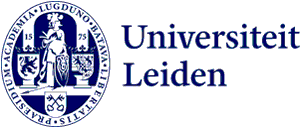
Nobel Prize for quantum physics: the circle for Bell's theorem is complete
This year's Nobel Prize in Physics goes to quantum physics research. The prize will be awarded on December 10 in Stockholm. Physicist Bas Hensen explains why this is important and how his research in Leiden relates to it.
The Nobel Prize in Physics crowns decades of research into quantum entanglement. This year's Nobel Prize in Chemistry goes to click chemistry. Leiden researchers are also fanatically engaged in that topic. Read more: Nobel Prize winner visited Leiden: 'We have hosted a scientific rockstar'
'Actually, this Nobel Prize is for John Stewart Bell. But he's dead, so he can't get it', Hensen begins. Quantum physics predicts that two separated particles can instantly affect each other and behave as one. This phenomenon is called quantum entanglement. In 1964, Bell proved in a mathematical theorem that this prediction is incompatible with the laws of classical physics. Quantum physics would therefore be fundamentally different. And that theorem, according to Bell, could be tested in an experiment.

Nobel Prize for quantum research
The winners - Alain Aspect, John F. Clauser and Anton Zeilinger - all three conducted experiments to test that theorem. Hensen explains: ‘Clauser was the first to take up Bell's idea of doing a test. That was very much against the current. Then Aspect improved the experiment. And Zeilinger spent most of his career working on all kinds of quantum entanglement.' Laughing, he adds: ‘Now we say: Bell, what an impact! But back then it was a bit of an obscure idea and nobody pursued it experimentally.'
Why is that experiment so important?
'It's incredible. You can say something very fundamental about the world with a single experiment. Namely, that particles can affect each other at an indeterminate distance from each other. That is bizarre of course.' But according to Hensen, that is not the only reason for the Nobel Prize. 'There are many technological applications. For example, the quantum computer is so powerful precisely because it uses quantum entanglement. In addition, when transmitting quantum information, you can use the Bell test to guarantee that no one is listening in.'
‘That became a race with two other groups. And we were the first!’
Bell test without loopholes
The work of the Nobel laureates forms the basis for Hensen's research. 'During my PhD, I worked with entanglement. My main result was also a Bell test, but for the first time loophole-free. Those were actually loopholes that were not yet closed in the experimental test', he explains. 'That became a race with two other groups. And we were the first!' According to Hensen the Nobel Prize was bound to come. ‘Our loophole-free Bell test in 2015 and the tests by Zeilinger and others shortly after were a logical trigger, because this completes the circle: from Bell's theoretical theorem in 1964 to a conclusive experiment', he says. 'What’s also nice, by the way, is that our publication was cited in the scientific background of the Nobel Prize.'

Quantum entanglement in Leiden
Hensen is now building his experimental setup in Leiden. 'I want to make entanglement again. That's something I can't stay away from. The twist now is that I'm going to try to do that via gravity. That is incredibly difficult, because to do that you have to have a lot of mass. And if you have a lot of mass, you have very few quantum properties. This is really going to be a long-term project.
When asked if he is excited to get started in Leiden, he replies: ‘Definitely! Our new measurement hall is fantastic. And Leiden really stands for curiosity-driven research. Of course there are technological applications, but sometimes you have to go a step further and say: let's investigate a fundamental question, even if it takes twenty years. In addition, there is a long history of wonderful research at extremely low temperatures and with very low noise.'
Source banner photo: Johan Jarnestad - The Royal Swedish Academy of Sciences
